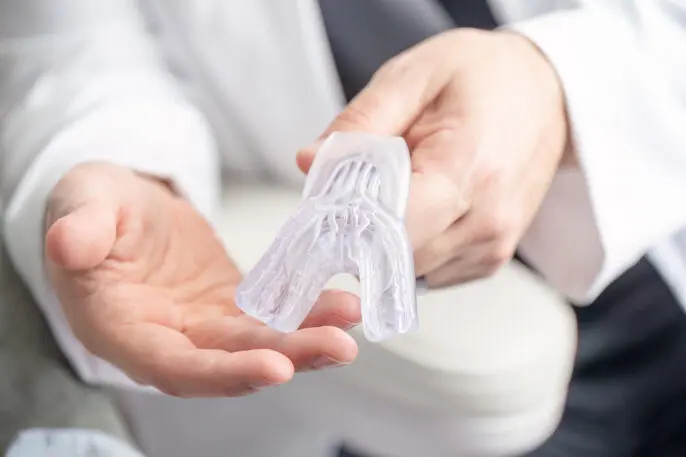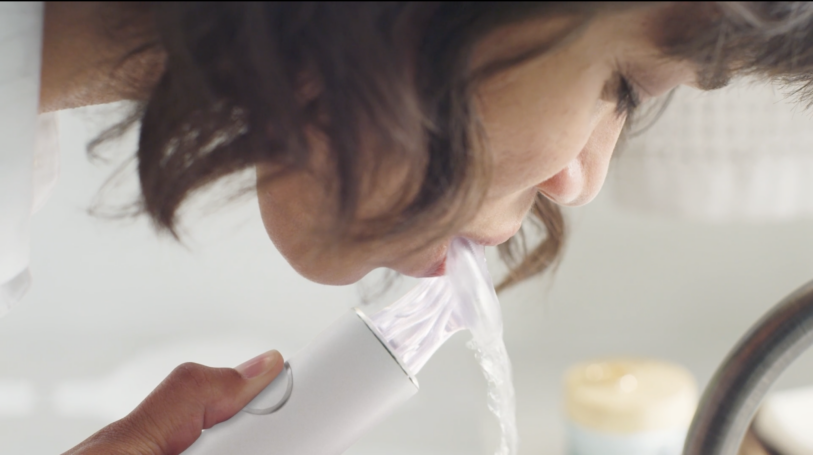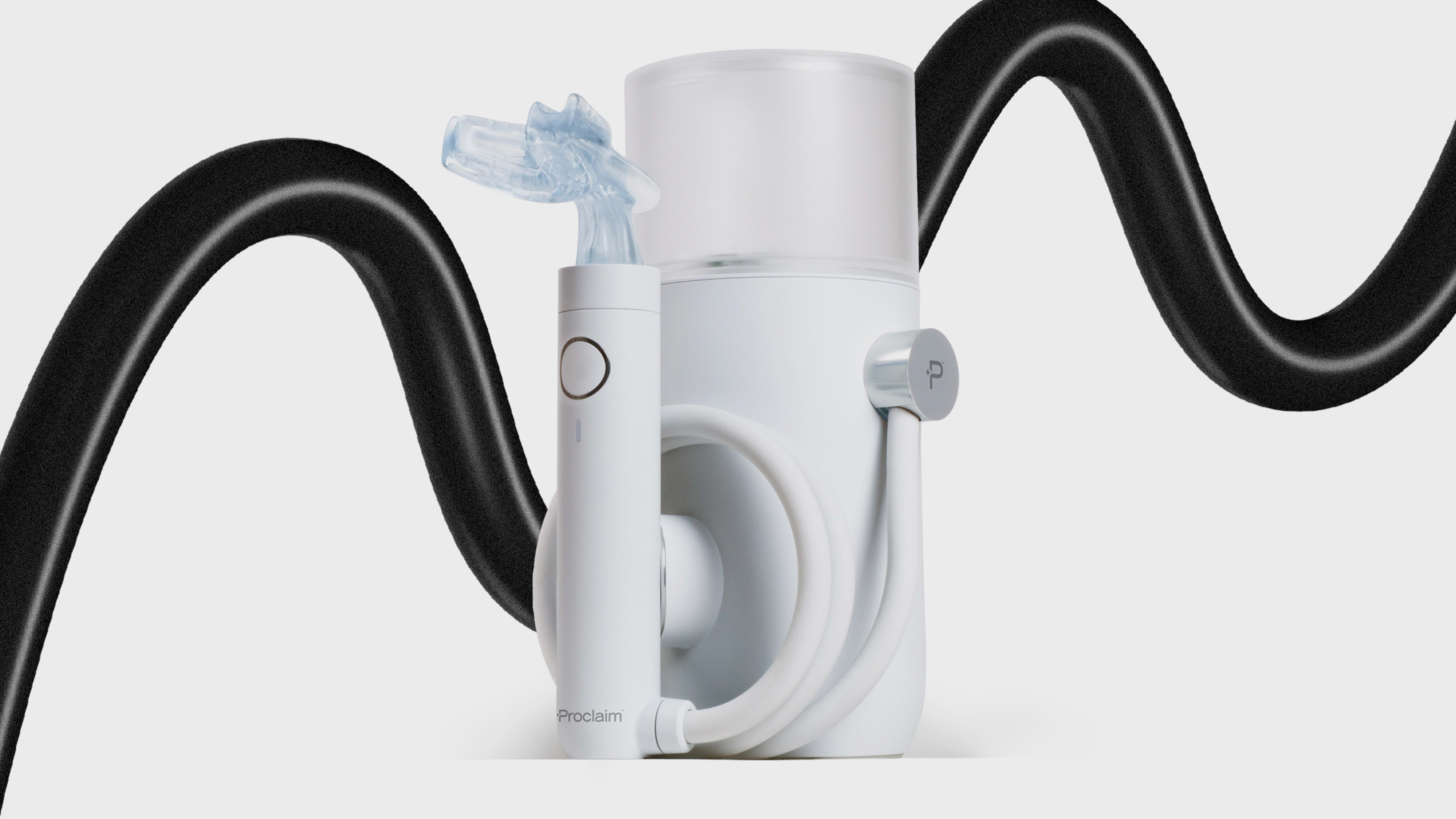For more than 200 years, dental hygiene has consisted of two simple parts: brushing and flossing. Brushing actually dates back thousands of years, but commercial dental floss was only invented in the early 1800s. Since then, it’s become a standard, if not entirely pleasant, part of a healthy dental routine. Imminently simple—it’s basically wax-covered string—floss is about as straightforward a design solution as possible.
But one new company thinks it’s time for floss to get disrupted.

Proclaim, a new product coming to the market later this year, aims to take down this staple of oral hygiene and replace it with a custom-fit mouthpiece that blasts water between the teeth and under the gum line. Designed to precisely fit each user’s mouth and surround the teeth with up to 60 tiny jets, it’s an in-mouth power washer that does a full hose down in just seven seconds. And, according to studies commissioned by the company, it works remarkably better than flossing.
Shipping by the end of September, Proclaim is available to preorder for $899. Heberto Calves is Proclaim’s CEO, and he says the device represents a major improvement to at-home oral care.
“Consumers are looking for personalization, preventative health, precision health, all these things that are kind of burgeoning, and we’re right in the epicenter of that in a sector that’s pretty dusty. There’s not a lot that’s been done to revolutionize oral care and oral health,” says Calves. “If you step back and take a look at it, it’s some form of brushes, picks, and strings is how we’ve been taking care of our mouths for thousands of years.” A few ancient examples are even on display in the company’s lab in Mountain View, California.
Calves acknowledges that there is one modern device that has already disrupted oral care: the Waterpik, an “oral irrigator” developed in the 1960s. Proclaim, Calves argues, is like a few dozen Waterpiks combined, and precisely targeted to clean exactly where each user needs.

Proclaim was designed to pulse liquid through the 60 or so jets that are fitted to the contours of each individual’s mouth. Using scans commonly performed and often on file at dentists’ offices, Proclaim’s software creates a 3D model of a user’s mouth anatomy and places proprietary heart-shaped jets that are precisely angled to spray between the teeth and down into the gum line. Calves says the software gets the model about 85% of the way there, based on the scans, and then a team of CAD designers refines the models to ensure ideal jet placement and fit. The mouthpiece is then 3D printed using a medical-grade, biocompatible resin that can last three to five years before requiring a replacement.
When in use, Proclaim looks like a scuba diver’s mouthpiece. The device rushes 22 ounces of liquid into the mouth in quick pulses, pushing through the teeth and around the gums before draining out of the back of the mouthpiece into a sink. It takes about seven seconds for all the liquid to be jetted through, at the same pressure used in the Waterpik. “It’s exhilarating,” says Calves.
A 192-person, 30-day trial funded by Proclaim tested the device’s efficacy in combination with manually brushing compared to brushing and flossing. The study found that Proclaim was about eight times more effective at cleaning plaque buildup, 10 times more effective at reducing gum bleeding, and nearly 13 times more effective at reducing gum inflammation.

These results may be enough to convince people to drop the $899 to buy one, but others will likely balk at the price tag, which is enough to cover decades’ worth of dental floss for even the most ardent of flossers. Calves says the price could come down over time, and he expects Proclaim to be registered with the FDA as a Class I medical device later this year, making it eligible for coverage by some insurance policies.
People inside and outside the dental world see the potential. The company has received investments from the dental insurer Delta Dental’s Colorado and Washington arms, as well as from the venture capital fund Khosla Ventures.
Calves says the company will begin marketing the device in just a few main markets, including California, Dallas, and the New York metropolitan region, and then expanding nationally next year. He’s also hoping to continue to run clinical tests on the device, including using formulated cleaning liquids in addition to water, and hopes to see other researchers put the device to the test independently. He’s confident the device can outperform conventional oral hygiene routines. But for people who’ve spent their whole lives brushing and flossing, he knows there’s some convincing to do. “We’re trying to create a new category here,” he says.
Recognize your brand’s excellence by applying to this year’s Brands That Matter Awards before the final deadline, June 7.
Sign up for Brands That Matter notifications here.
